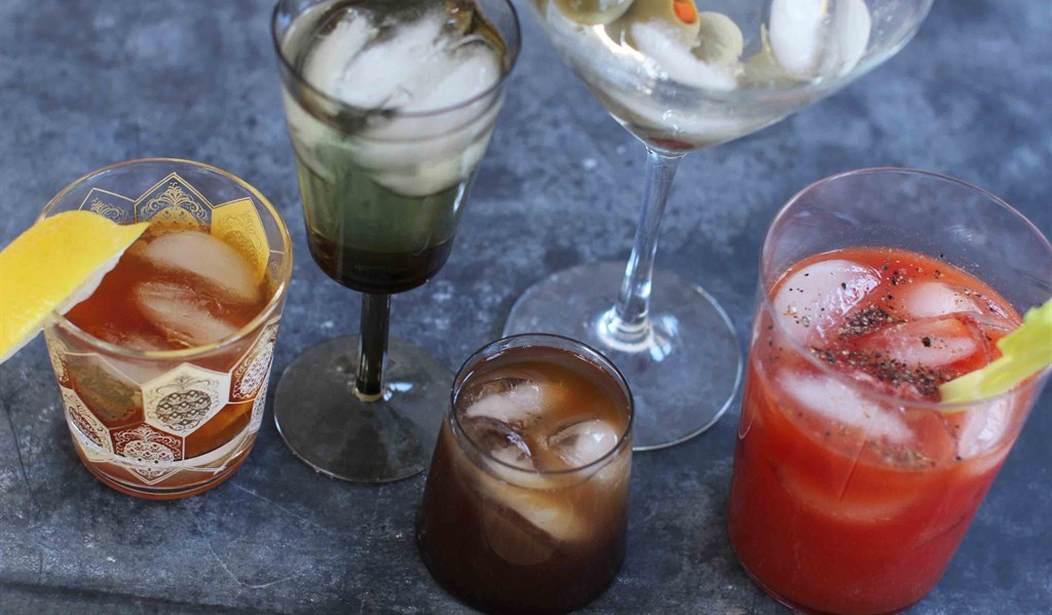First, it was plastic bags. Then plastic straws. As the climate alarmists grew bolder, they began to come for our gas stoves, dishwashers, air conditioners, gas furnaces, and eventually even wood and coal-fired pizza ovens. We griped our heads off, but we didn’t march in the street and demand: “Enough is enough!”
That time may now have come, America; time to finally draw that line in the proverbial sand and declare: “It ends right here and now, climate loons— this nonsense is over!”
Why now, you ask? Because the climate catastrophizers are now coming for our ice cubes, my fellow ice lovers, and you know what that means: Margaritas, Bloody Marys, bourbon on the rocks —or whatever cocktail floats your boat — may soon become mere shadows of their formerly glorious ice-cold selves.
Sarcasm aside, it’s true: Ice in cocktails appears to be the latest target of the climate loons. And if Scientific American [SA] has anything to say about it, our cocktails are never going to be the same.
In an article titled Climate-Friendly Cocktail Recipes Go Light on Ice, the haughty “scientific journal” argues that due to so-called (anthropomorphic) climate change, it’s time to put an end to enjoyable amounts of ice in your favorite cocktail.
For years the hospitality industry has seen diners clamoring for foods that prioritize climate-friendly practices, such as local and seasonal ingredients that are grown or raised with carbon footprints in mind. Yet cocktail culture hasn’t been hit with the same scrutiny.
As the American West experiences water scarcity and energy prices remain volatile, the protocol for properly made cocktails doesn’t look sustainable. Is it possible to make satisfying cocktails without so much ice?
How to put this tactfully … what a complete crock of crap.
I dine out often, and I’m not aware of patrons of restaurants I frequent “clamoring” for their meals to be prepared with “climate-friendly practices,” and I sure as hell wasn’t aware — until now [sarc] — that the existential threat to mankind has reached the point where cocktail ice cubes might very well push the planet into the “climate change” abyss.
‘Cocktail Culture’ and ‘Sustainability’
SA claims ice-making machines generally require 100 gallons of water to make 100 pounds of crushed ice or ice cubes. Wait— shouldn’t that be the case, or am I missing something? Anyway, how bad is it, according to SA?
It’s an amount so egregious that the U.S. Department of Energy’s Federal Energy Management Program now restricts the installation of water-cooled ice machines except in buildings with cooling towers.
Has anyone called climate gnome Greta Thunberg? Maybe she can figure out this whole climate mess, now that she’s finally graduated from high school.
So here’s just one example of how deeply SA apparently researched the existential threat of ice cubes:
Ice not only cools cocktails; it changes their flavor, texture and balance. Shaking liquids with one-inch cubes, for example, aerates the alcohol and emphasizes subtle flavors, and it can also produce thick foams necessary for drinks such as the whisky sour.
Crushed ice, meanwhile, dilutes cocktails quickly because of its high surface area, creating the refreshing, slushy consistency found in juleps that would taste too cloying otherwise.
[…]
Today even a moderately busy bar requires a lot of ice to get through a night. Bartenders are advised never to use the same cube twice when going through the steps of making a single cocktail: chilling glassware, shaking or stirring, and serving the drink. It’s a process that requires a significant amount of water and energy.
For years the hospitality industry has seen diners clamoring for foods that prioritize climate-friendly practices, such as local and seasonal ingredients that are grown or raised with carbon footprints in mind. Yet cocktail culture hasn’t been hit with the same scrutiny.
“As the American West experiences water scarcity and energy prices remain volatile,” SA warned, “the protocol for properly made cocktails doesn’t look sustainable. Is it possible to make satisfying cocktails without so much ice?”
SA didn’t answer its own question but instead launched into another scientific deep dive about ice cubes:
As any bartender will tell you, a cocktail flung back and forth over ice inside a shaker gets cold very fast. “The amount of energy you get from melting ice is phenomenal,” [scientist Dave] Arnold told me.
Calculator in hand, he explained that if you shake three and a half ounces of tempered ice for 12 seconds, you’ll generate about 2,000 watts of power on average. This amount is roughly the maximum load that can be safely drawn from a typical American home’s electric outlet. “There’s no real other way to … extract that much heat from something as quickly,” Arnold said.
I’m no Einstein, but what does the “fact” that shaking three and a half ounces of tempered ice for 12 seconds will generate 2,000 watts of power have to do with climate change? Besides, it’s not like those 2,000 watts of power could be used for reasons more important than making ice-cold cocktails.
So how much ice does an average bar use? Todd Bell, a senior energy analyst at energy-efficiency consulting group Frontier Energy, estimated the amount to be 200 and 300 pounds a night. Moreover, the previously mentioned Arnold said: “The ice-making procedure in bars is crazy wasteful.”
The Scientific American article droned on and on — that’s what scientific journals do, you know — as part of its attempt to portray ice cubes as the next climate-destroying villain.
The Bottom Line
After reading the Scientific American article in its entirety, it’s time for a bourbon on the rocks — with extra ice.
Just kidding; I don’t drink. Why not? Let’s just say I’m doing my little part to help save the planet.















Join the conversation as a VIP Member